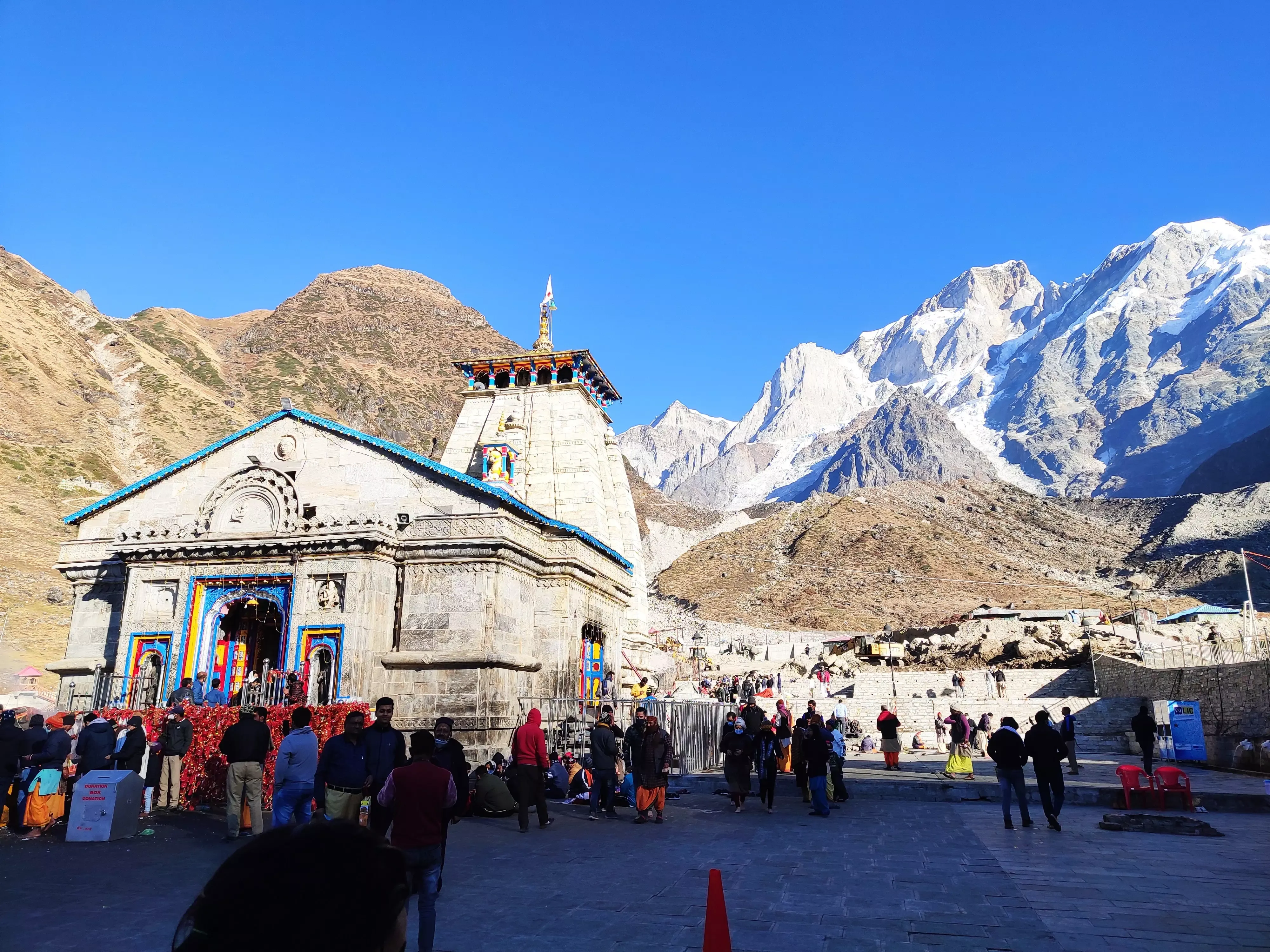Zipping up my leather jacket and
sweeping the hair off my face, I made my way down the helipad where a royal
blue chopper stood waiting, roaring magnificently and sending tremors through
the ground. Having been made to eat light and carry extras in terms of
clothing, a sense of excitement mingled with fear of disappointment about
unrealistic expectations was setting in. Having buckled up, the chopper took
off, as did my imagination about the place we were flying to, one of the
shrines among Chota Char Dham, the divine abode of Lord Shiva: Kedarnath.
As is often said, "The
journey is every bit as beautiful as the destination itself." Swathed in
clouds, the ice-capped mountains that were spotted as tiny white dots in the
distant horizon were now beginning to show up in all their grandeur. As we flew
past the enigmatic Himalayan range, I could not help but speculate about the
years of weathering that these mountains had seen, the sadhus, the saints, the
mountaineers, who had traversed the rocky paths to unravel the mysteries of
nature and explore beyond the known. To be in the vicinity of something so
ancient, which had stood the test of age and time, was a humbling experience
like no other.
Did You Know: Whereis Nataraja Temple?
Just as my thoughts continued to
race through, I happened to glance upon the river Bhagirathi, sparkling away in
all its glory with the Tehri dam standing proudly on its banks. As remarkable
as it is considered in terms of utility, the construction of the Tehri
hydropower complex is worth a mention too. While the dam has played a pivotal
role in altering the means of electricity generation and irrigation in the
surrounding regions, there is always a slight worry regarding the dam among the
residents nearby, more so after the disastrous floods of 2013. While gazing
down, we also observed quite a noticeable movement where villagers from the
surrounding regions were descending down the mountains in a procession. On
enquiring, we got to know that the villagers in these regions usually have two
dwellings, one on the peak and one in the valley. Being the end of October, the
villagers were now making their way down to the valley where they would reside
until the harsh winters subsided, giving a glimpse into the fact that living in
the mountains is not as serene and lovely as our rose-tinted glasses make it
out to be.
Forty minutes into the ride, I
finally felt the chopper beginning to descend and land behind the temple. As
forewarned, I mentally readied myself for the biting cold, waiting to hit me
the minute I stepped out. However, nothing could have prepared me for what
awaited outside. Standing ever so handsomely, the Kedarnath peak captivated my
mind from the minute I laid my eyes upon it. In that moment, neither did I know
anything, feel anything nor did I want anything else. I stood rooted to the
spot, gazing at the mountains which for some reason imparted a sense of warmth
and familiarity and gave me a sense of homecoming. Having had the privilege to
travel around a bit, there has never been a place that has had such a profound
impact, an impact so great that I teared up due to the sheer emotion. Spotted
missing from the group I had come with, I was then taken to the temple premises
where the puja was performed with all of us craning our necks to catch a
glimpse of the Jyotirlinga. Post this, we were shown the Bheem Sila, the rock
that had come down from the Kedarnath peak during the floods of 2013. Instead
of ramming into the temple, it stopped short a few feet and diverted the flood
of water coming its way, thereby establishing its divinity amongst the locals.
It is also said that Guru Adi Shankaracharya was last seen walking towards the
mountains behind the temple and was never seen after. For a guru who is
considered an avatar of Lord Shiva himself, it was befitting for him to return
to his abode.
Did You Know: Where is
Kalpavriksha?
Although the Jyotirlinga was the
highlight for all the tourists and devotees present there, I could not pull my
gaze away from the majestic Himalayan range behind the shrine. For anyone who
has read up on Lord Shiva, they would know that he is not one to be constricted
within four walls.
The magnetic pull of the
mountains symbolizes his presence and provides an incomparable sense of calm
and tranquillity.
On reminiscing, all it seemed
like was a moment. A moment with innumerable fleeting emotions. However, there
never were and will never be enough words that could do justice to that moment.
"The journey here might take
you a lifetime but to be here would be a lifetime in itself."
Har Har Mahadev
Written By- Haareca Chintala
